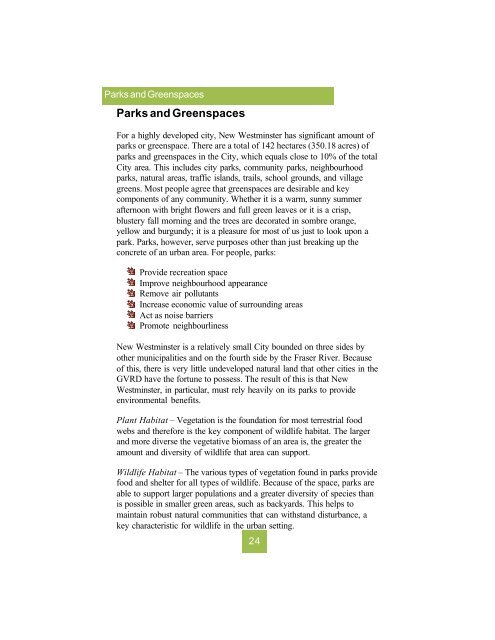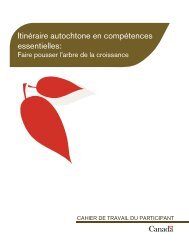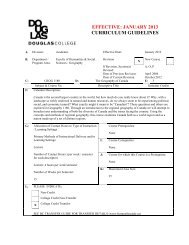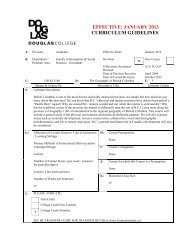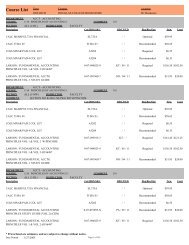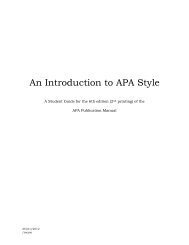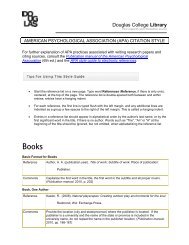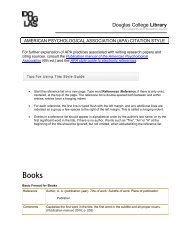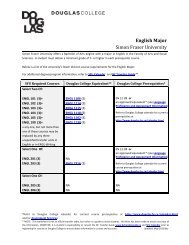New Westminster Environmental Almanac (2917 ... - Douglas College
New Westminster Environmental Almanac (2917 ... - Douglas College
New Westminster Environmental Almanac (2917 ... - Douglas College
Create successful ePaper yourself
Turn your PDF publications into a flip-book with our unique Google optimized e-Paper software.
Parks and Greenspaces<br />
Parks and Greenspaces<br />
For a highly developed city, <strong>New</strong> <strong>Westminster</strong> has significant amount of<br />
parks or greenspace. There are a total of 142 hectares (350.18 acres) of<br />
parks and greenspaces in the City, which equals close to 10% of the total<br />
City area. This includes city parks, community parks, neighbourhood<br />
parks, natural areas, traffic islands, trails, school grounds, and village<br />
greens. Most people agree that greenspaces are desirable and key<br />
components of any community. Whether it is a warm, sunny summer<br />
afternoon with bright flowers and full green leaves or it is a crisp,<br />
blustery fall morning and the trees are decorated in sombre orange,<br />
yellow and burgundy; it is a pleasure for most of us just to look upon a<br />
park. Parks, however, serve purposes other than just breaking up the<br />
concrete of an urban area. For people, parks:<br />
Provide recreation space<br />
Improve neighbourhood appearance<br />
Remove air pollutants<br />
Increase economic value of surrounding areas<br />
Act as noise barriers<br />
Promote neighbourliness<br />
<strong>New</strong> <strong>Westminster</strong> is a relatively small City bounded on three sides by<br />
other municipalities and on the fourth side by the Fraser River. Because<br />
of this, there is very little undeveloped natural land that other cities in the<br />
GVRD have the fortune to possess. The result of this is that <strong>New</strong><br />
<strong>Westminster</strong>, in particular, must rely heavily on its parks to provide<br />
environmental benefits.<br />
Plant Habitat – Vegetation is the foundation for most terrestrial food<br />
webs and therefore is the key component of wildlife habitat. The larger<br />
and more diverse the vegetative biomass of an area is, the greater the<br />
amount and diversity of wildlife that area can support.<br />
Wildlife Habitat – The various types of vegetation found in parks provide<br />
food and shelter for all types of wildlife. Because of the space, parks are<br />
able to support larger populations and a greater diversity of species than<br />
is possible in smaller green areas, such as backyards. This helps to<br />
maintain robust natural communities that can withstand disturbance, a<br />
key characteristic for wildlife in the urban setting.<br />
24


